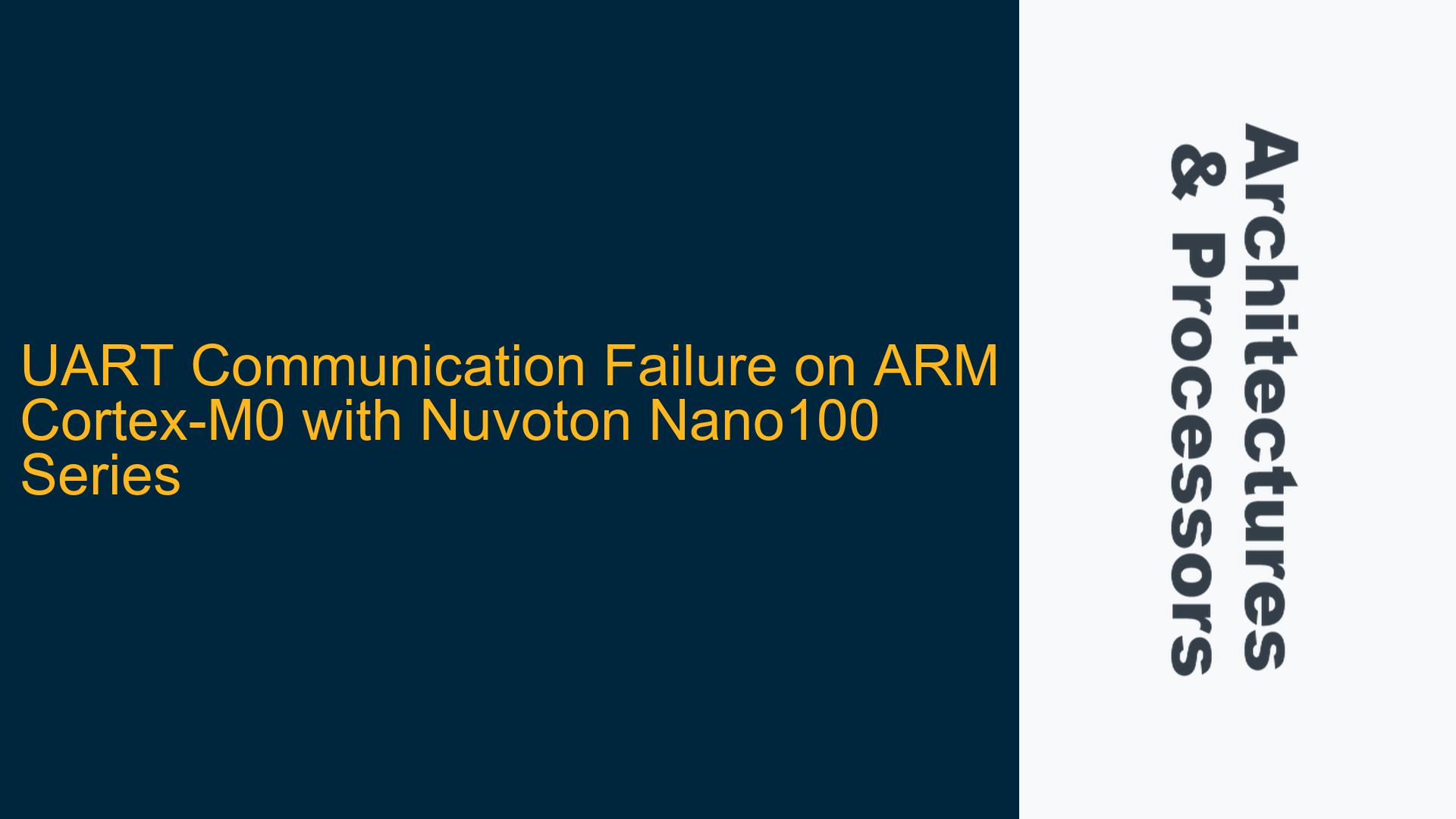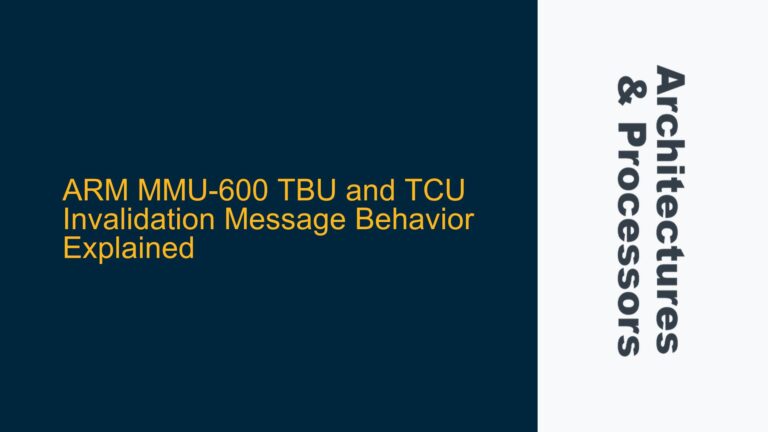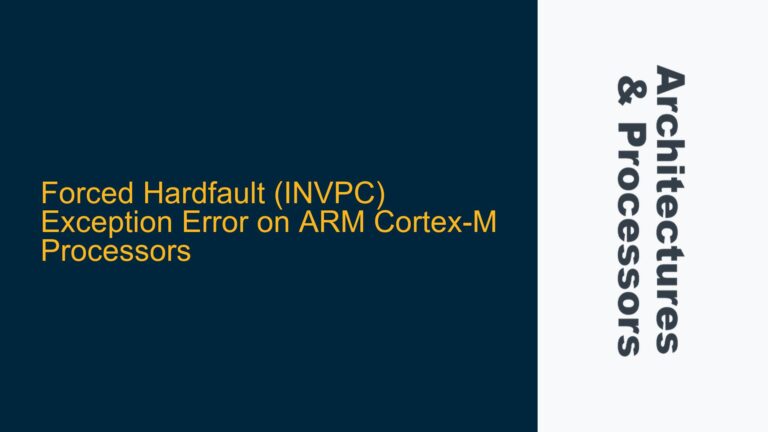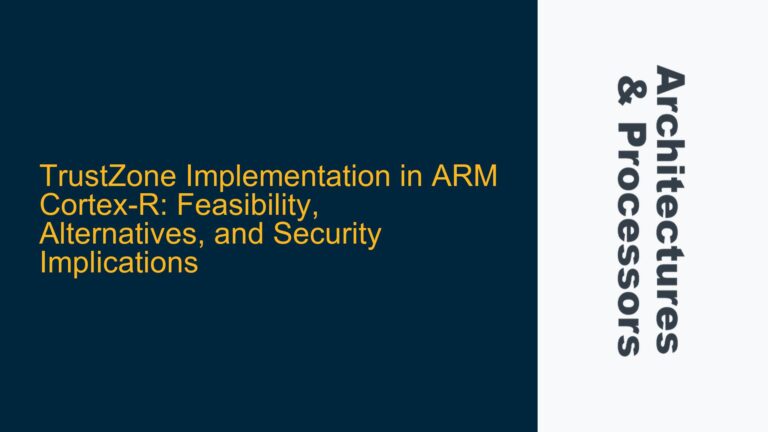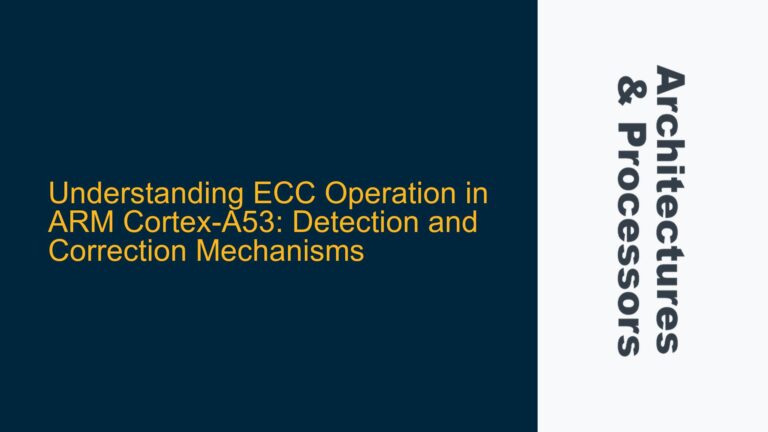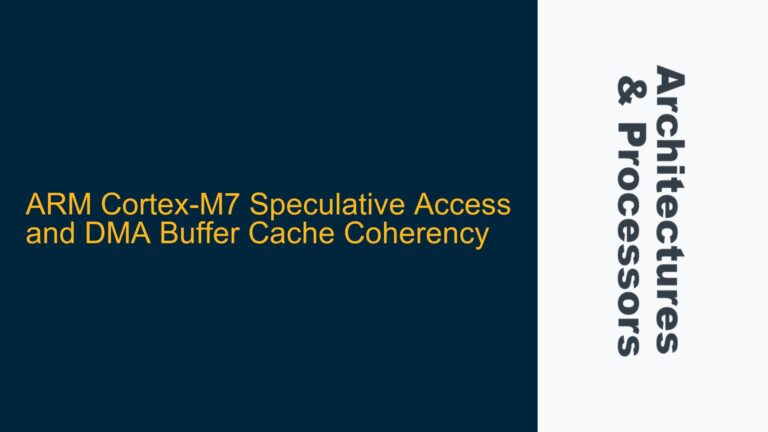UART Initialization and Configuration Issues on Nuvoton Nano100 Series
The core issue revolves around the failure to receive any data on the UART serial terminal despite the code compiling successfully. The user is attempting to configure and use UART0 and UART1 on an ARM Cortex-M0 microcontroller from the Nuvoton Nano100 Series. The code includes clock configuration, pin multiplexing, and UART initialization, but the UART communication is not functioning as expected. This suggests potential issues in the initialization sequence, clock configuration, or UART peripheral setup.
The Nuvoton Nano100 Series microcontrollers rely on a precise sequence of steps to configure the UART peripherals, including enabling the appropriate clocks, setting up the pin multiplexing, and initializing the UART registers. Any deviation from this sequence or incorrect configuration can lead to communication failures. Additionally, the ARM Cortex-M0 architecture has specific requirements for peripheral initialization and clock management that must be adhered to for proper functionality.
Clock Configuration Errors and Pin Multiplexing Misalignment
One of the primary causes of UART communication failure in this scenario is incorrect clock configuration. The Nuvoton Nano100 Series microcontrollers require the High-Speed External Crystal (HXT) to be enabled and selected as the clock source for the UART peripherals. The user’s code attempts to enable the HXT and configure the clock sources for UART0 and UART1, but there may be timing issues or incorrect register settings that prevent the clocks from being properly enabled.
Another potential cause is misalignment in the pin multiplexing configuration. The Nuvoton Nano100 Series microcontrollers use a flexible pin multiplexing system that allows multiple peripherals to share the same physical pins. The user’s code configures the PB and PA pins for UART0 and UART1, respectively, but there may be conflicts or incorrect settings in the multiplexing registers that prevent the UART signals from being routed correctly.
Additionally, the UART initialization function UART_Open is called with a baud rate of 115200, but there is no verification that the baud rate is correctly set or that the UART peripheral is ready to transmit and receive data. The ARM Cortex-M0 architecture requires careful management of peripheral initialization timing, and any deviation from the recommended sequence can lead to communication failures.
Correcting Clock Configuration, Pin Multiplexing, and UART Initialization
To resolve the UART communication failure, the following steps should be taken to ensure proper clock configuration, pin multiplexing, and UART initialization:
Step 1: Verify Clock Configuration
The first step is to verify that the HXT is correctly enabled and stable before configuring the UART peripherals. The Nuvoton Nano100 Series microcontrollers require a specific sequence to enable the HXT and switch the clock source. The following code snippet demonstrates the correct sequence:
// Enable HXT
CLK->PWRCTL |= (1 << CLK_PWRCTL_HXT_EN_Pos);
// Wait until HXT is stable
while (!(CLK->CLKSTATUS & CLK_CLKSTATUS_HXT_STB_Msk));
// Switch HCLK clock source to HXT
CLK->CLKSEL0 &= ~CLK_CLKSEL0_HCLK_S_Msk;
CLK->CLKSEL0 |= CLK_CLKSEL0_HCLK_S_HXT;
This sequence ensures that the HXT is enabled and stable before switching the HCLK clock source to HXT. The while loop ensures that the HXT is stable before proceeding, which is critical for reliable operation.
Step 2: Configure Pin Multiplexing Correctly
The next step is to ensure that the pin multiplexing is correctly configured for UART0 and UART1. The Nuvoton Nano100 Series microcontrollers use the SYS->PB_L_MFP and SYS->PA_L_MFP registers to configure the pin multiplexing. The following code snippet demonstrates the correct configuration for UART0 and UART1:
// Set PB multi-function pins for UART0 RXD and TXD
SYS->PB_L_MFP &= ~(SYS_PB_L_MFP_PB0_MFP_Msk | SYS_PB_L_MFP_PB1_MFP_Msk);
SYS->PB_L_MFP |= (SYS_PB_L_MFP_PB0_MFP_UART0_RX | SYS_PB_L_MFP_PB1_MFP_UART0_TX);
// Set PA multi-function pins for UART1 RXD and TXD
SYS->PA_L_MFP &= ~(SYS_PA_L_MFP_PA2_MFP_Msk | SYS_PA_L_MFP_PA3_MFP_Msk);
SYS->PA_L_MFP |= (SYS_PA_L_MFP_PA2_MFP_UART1_RX | SYS_PA_L_MFP_PA3_MFP_UART1_TX);
This configuration ensures that the PB0 and PB1 pins are correctly multiplexed for UART0, and the PA2 and PA3 pins are correctly multiplexed for UART1. Any conflicts or incorrect settings in the multiplexing registers can prevent the UART signals from being routed correctly, leading to communication failures.
Step 3: Initialize UART Peripherals Properly
The final step is to ensure that the UART peripherals are initialized correctly. The UART_Open function is used to initialize the UART peripherals with a specific baud rate. However, it is important to verify that the baud rate is correctly set and that the UART peripheral is ready to transmit and receive data. The following code snippet demonstrates the correct initialization sequence:
// Enable IP clock for UART0 and UART1
CLK->APBCLK |= CLK_APBCLK_UART0_EN | CLK_APBCLK_UART1_EN;
// Select IP clock source for UART0 and UART1
CLK->CLKSEL1 &= ~CLK_CLKSEL1_UART_S_Msk;
CLK->CLKSEL1 |= (0x0 << CLK_CLKSEL1_UART_S_Pos);
// Initialize UART0 and UART1 with a baud rate of 115200
UART_Open(UART0, 115200);
UART_Open(UART1, 115200);
This sequence ensures that the UART peripherals are enabled and initialized with the correct baud rate. The UART_Open function should be called after the clock and pin multiplexing configurations are complete to ensure that the UART peripherals are ready to operate.
Step 4: Verify UART Communication
After completing the above steps, it is important to verify that the UART communication is functioning correctly. This can be done by sending a test message from the microcontroller and checking the output on the UART serial terminal. The following code snippet demonstrates how to send a test message:
char testMessage[] = "UART Test Message\n";
while (1) {
// Send test message on UART0 and UART1
UART_Write(UART0, testMessage, sizeof(testMessage) - 1);
UART_Write(UART1, testMessage, sizeof(testMessage) - 1);
// Delay for a short period
for (volatile int i = 0; i < 1000000; i++);
}
This code sends a test message on both UART0 and UART1 in a loop, with a short delay between each transmission. The output should be visible on the UART serial terminal if the UART communication is functioning correctly.
Step 5: Debugging and Troubleshooting
If the UART communication is still not functioning after completing the above steps, further debugging may be required. This can include checking the following:
- Clock Configuration: Verify that the HXT is enabled and stable, and that the clock source for the UART peripherals is correctly set.
- Pin Multiplexing: Verify that the PB and PA pins are correctly multiplexed for UART0 and UART1, and that there are no conflicts with other peripherals.
- UART Initialization: Verify that the UART peripherals are initialized with the correct baud rate and that the
UART_Openfunction is called after the clock and pin multiplexing configurations are complete. - Hardware Connections: Verify that the UART signals are correctly connected to the serial terminal and that there are no hardware issues.
By following these steps, the UART communication failure on the ARM Cortex-M0 with the Nuvoton Nano100 Series can be resolved, ensuring reliable communication between the microcontroller and the serial terminal.
